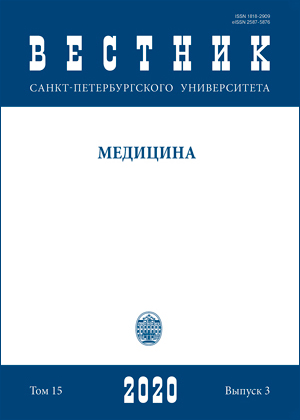Hygienic safety characteristics of bottled water, used for potable water supply
DOI:
https://doi.org/10.21638/spbu11.2020.307Abstract
On the basis of the results of performed analysis of literature references concerning influence of phthalates on population health indicators it was found out that their influence at prenatal period may lead to asthma development in children, as well as to allergy, obesity; they also provide anti-androgens effect, leading to growth inhibition and delay in sexual maturation, and to variance of systolic pressure. In case of men phthalates are associated with decreasing of testosterone level and sperms quality, that indicates at their possible role in male sterility. In case of women phthalates are associated with increase of the risk of the second type of diabetes appearance, as well as leiomyoma, endometriosis and breast carcinoma. Laboratory studies performed in accordance with Customs union’s technical regulation ТР ТС 005/2011 enabled to detect phthalates in the packages of bottled water, able to migrate into the bottled water. The results justify the necessity to monitor phthalates in bottled water.
Keywords:
bisphenol А, phthalates, bottled water, drinking water, polyethyleneterephthalate, polycarbonate
Downloads
References
References
Downloads
Published
How to Cite
Issue
Section
License
Articles of "Vestnik of Saint Petersburg University. Medicine" are open access distributed under the terms of the License Agreement with Saint Petersburg State University, which permits to the authors unrestricted distribution and self-archiving free of charge.




